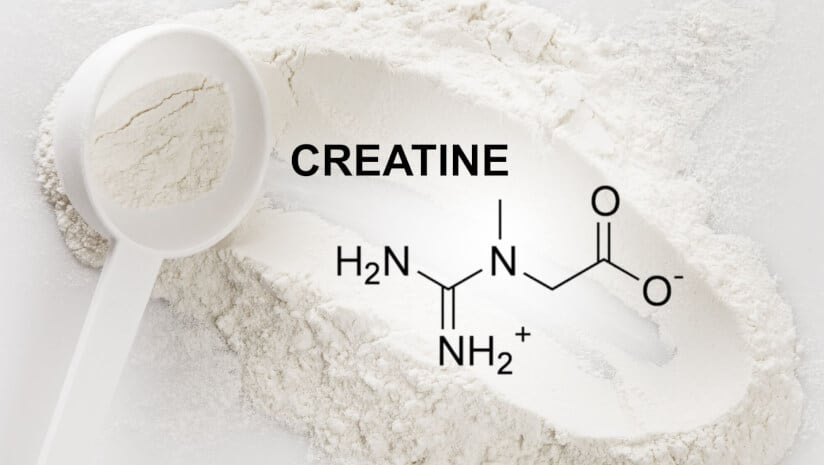A semi-essential nutrient, creatine is produced naturally in the body by three main amino acids—arginine, methionine and glycine. It is also found in the diet in foods such as meat, eggs and fish.
A new analysis of data from the Third National Health and Nutrition Examination Survey (NHANES III) indicated that the estimated endogenous production of creatine from the three precursor amino acids is over 2.5 times greater than the amount of creatine directly obtained from food.
However, scientists from the University of Novi Sad in Serbia reported that the contribution from these dietary precursors declines with age.
“Our study demonstrates that creatine precursors provide a substantial supply of the necessary building blocks for endogenous creatine production, surpassing direct dietary creatine intake in all age groups,” wrote David Nedeljkovic and Sergej Ostojic in Amino Acids. “These results highlight the importance of adequate dietary intake of creatine precursors, particularly for populations at risk of reduced creatine synthesis, such as older adults.”
‘The results have important implications’
Commenting independently on the new study, Darren Candow, PhD, director of the Aging Muscle and Bone Health Laboratory at the University of Regina in Canada, told NutraIngredients this is a “very important overview.”
“The authors did a great job highlighting a huge gap in the literature—the role of creatine precursors in relation to endogenous creatine synthesis,” he said. “The results have important implications—that a higher intake high in arginine, glycine and methionine is important as they serve to help synthesize creatine, and these amino acids play other vital roles in human physiology.”
Candow added that selecting high-quality protein food sources will provide these amino acids, especially methionine.
“A key aspect of the paper is that there is a reduction, likely from dietary intake, with aging,” he said. “There is some evidence to suggest that intramuscular creatine stores are reduced in older adults. Thus, consuming these precursors is important to help maintain or increase creatine biosynthesis in the liver and brain.”
Creatine for sports and beyond
Creatine established itself as a go-to ergogenic aid in the sports nutrition space soon after Roger Harris and his colleagues published the seminal study on creatine loading in 1992. The discovery suggested the compounds could significantly increase muscle creatine content and enhance performance. In recent years, the potential benefits of creatine have extended to include brain health and bone health.
Study details
The new study by Nedeljkovic and Ostojic is reportedly the first to comprehensively evaluate total creatine availability from dietary sources, including both its precursor amino acids and preformed creatine from food.
Analysis for data from 29,945 U.S. adults and children revealed that the mean daily intake of creatine in the diet was 15.5 mg per kg of body weight. On the other hand, the estimated precursor-derived creatine production was 41.9 mg/kg, approximately 2.7 times higher.
Interestingly, the greatest ratio (2.8:1) was observed in children and adolescents, a result that suggested that “endogenous creatine synthesis plays a particularly critical role during growth and development,” wrote Nedeljkovic and Ostojic.
“The findings of this study hold important implications for public health nutrition, particularly in refining dietary recommendations aimed at optimizing creatine availability,” they wrote. “Given creatine’s essential role in human physiology, a comprehensive understanding of its dietary sources—including direct intake and endogenous synthesis—is crucial for addressing potential deficiencies.
“Our results suggest that while endogenous synthesis significantly contributes to total creatine availability, this capacity declines with age. This underscores the need for targeted nutritional interventions, particularly among at-risk populations such as older adults, vegetarians and individuals with metabolic disorders.
“Public health initiatives should consider strategies to ensure sufficient intake of creatine precursors through balanced diets or, where necessary, supplementation and food fortification.”
Active Nutrition Summit
Dr. Sergej Ostojic will present at the upcoming Active Nutrition Summit , hosted by NutraIngredients (Vienna, June 23-25).
Dr. Ostojic will discuss creatine for the general population, and why the ingredient is semi-essential nutrient for healthy aging.
Source: Amino Acids, 2025, 57, 29, doi: 10.1007/s00726-025-03460-7. “Dietary exposure to creatine-precursor amino acids in the general population”. Authors: D. Nedeljkovic and S.M. Ostojic.


